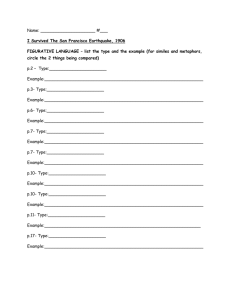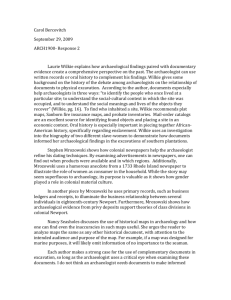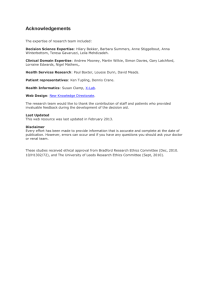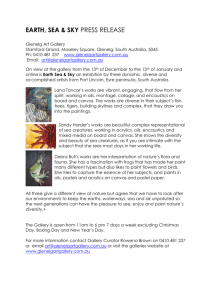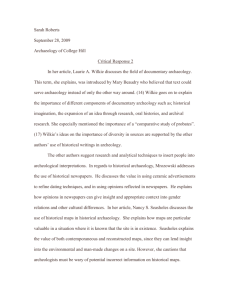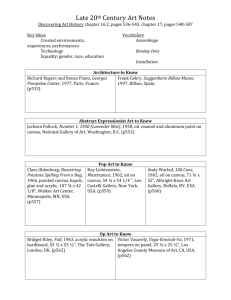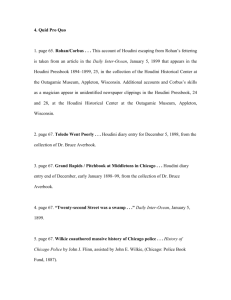22/30 July Molly Duggins
advertisement
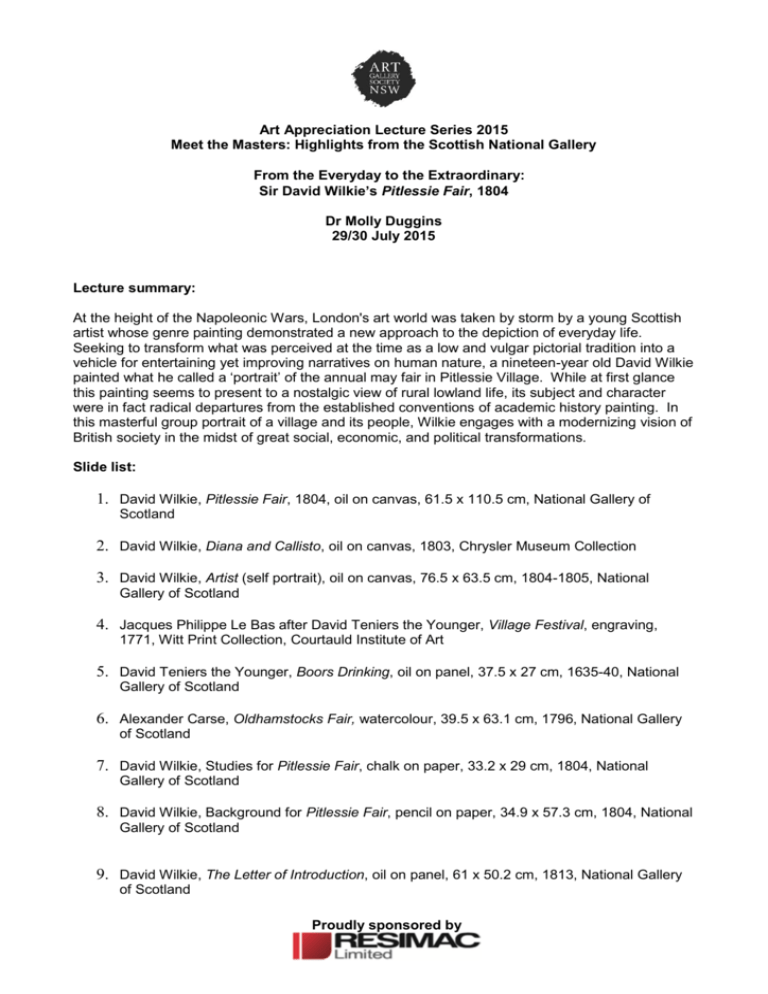
Art Appreciation Lecture Series 2015 Meet the Masters: Highlights from the Scottish National Gallery From the Everyday to the Extraordinary: Sir David Wilkie’s Pitlessie Fair, 1804 Dr Molly Duggins 29/30 July 2015 Lecture summary: At the height of the Napoleonic Wars, London's art world was taken by storm by a young Scottish artist whose genre painting demonstrated a new approach to the depiction of everyday life. Seeking to transform what was perceived at the time as a low and vulgar pictorial tradition into a vehicle for entertaining yet improving narratives on human nature, a nineteen-year old David Wilkie painted what he called a ‘portrait’ of the annual may fair in Pitlessie Village. While at first glance this painting seems to present to a nostalgic view of rural lowland life, its subject and character were in fact radical departures from the established conventions of academic history painting. In this masterful group portrait of a village and its people, Wilkie engages with a modernizing vision of British society in the midst of great social, economic, and political transformations. Slide list: 1. David Wilkie, Pitlessie Fair, 1804, oil on canvas, 61.5 x 110.5 cm, National Gallery of Scotland 2. David Wilkie, Diana and Callisto, oil on canvas, 1803, Chrysler Museum Collection 3. David Wilkie, Artist (self portrait), oil on canvas, 76.5 x 63.5 cm, 1804-1805, National Gallery of Scotland 4. Jacques Philippe Le Bas after David Teniers the Younger, Village Festival, engraving, 1771, Witt Print Collection, Courtauld Institute of Art 5. David Teniers the Younger, Boors Drinking, oil on panel, 37.5 x 27 cm, 1635-40, National Gallery of Scotland 6. Alexander Carse, Oldhamstocks Fair, watercolour, 39.5 x 63.1 cm, 1796, National Gallery of Scotland 7. David Wilkie, Studies for Pitlessie Fair, chalk on paper, 33.2 x 29 cm, 1804, National Gallery of Scotland 8. David Wilkie, Background for Pitlessie Fair, pencil on paper, 34.9 x 57.3 cm, 1804, National Gallery of Scotland 9. David Wilkie, The Letter of Introduction, oil on panel, 61 x 50.2 cm, 1813, National Gallery of Scotland Proudly sponsored by 10. Abraham Raimbach after David Wilkie, Village Politicians, etching, 1813 11. Joseph Mallord William Turner, A Country Blacksmith Disputing upon the Price of Iron, and the Price Charged to the Butcher for Shoeing his Poney, oil on panel, 54.9 x 77.8 cm, 1807, Tate 12. David Wilkie, The Blind Fiddler, oil on panel, 57.8 x 79.4 cm, 1806, Tate 13. David Wilkie, The Jew’s Harp, oil on panel, ca. 1808, Sudley House, National Museums Liverpool 14. David Wilkie, The Village Holiday, oil on canvas, 94 x 127.6 cm, 1809-11, Tate 15. Jacques Philippe Le Bas after David Teniers the Younger, Guinguette Flamande, engraving, 1771, Witt Print Collection, Courtauld Institute of Art 16. Joshua Reynolds, David Garrick between Tragedy and Comedy, oil on canvas, 1760-61, Rothschild Collection 17. William Hogarth, The March of the Guards to Finchley, oil on canvas, 1749-50, The Foundling Museum, London 18. David Wilkie, The Penny Wedding, oil on panel, 5.1 x 95.6 cm, 1818, Royal Collection Trust 19. Jean-Baptiste Greuze, The Village Bride, oil on canvas, 91.4 x 118.1 cm, 1761, Musée du Louvre 20. David Wilkie, The Chelsea Pensioners Reading the Waterloo Dispatch, oil on canvas, 158 x 97 cm, 1822, Apsley House 21. William Powell Frith, The Derby Day, oil on canvas, 101.6 x 223.5 cm, 1856-8, Tate References: Lindsay Errington, Tribute to Wilkie: from the National Gallery of Scotland, exh cat, Edindburgh, National Galleries of Scotland, 1985. David Solkin, Painting out of the ordinary: modernity and the art of everyday life in early nineteenth-century Britain, New Haven, Conn: Yale University Press, 2008. Nicholas Tromans, David Wilkie: the people’s painter, Edinburgh, Edinburgh University Press, 2007. For access to all past lecture notes visit: http://www.artgallery.nsw.gov.au/members/current-members/member-events/meet-the-masters/
